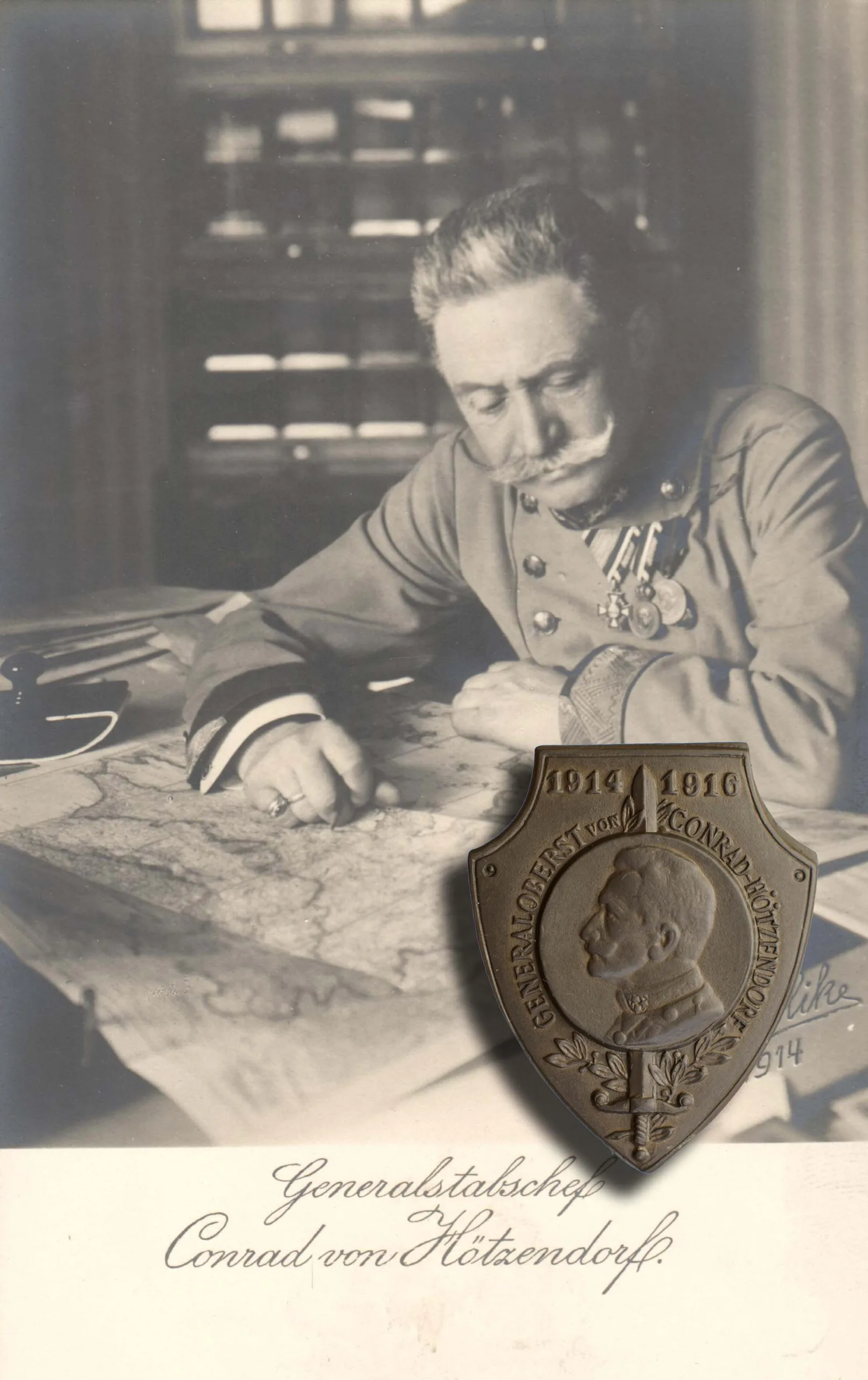Franz Graf Conrad von Hötzendorf
Field Marshal, Chief of Staff of the Austro-Hungarian Empire during most of the Great War (1912-1917).
He was born in Vienna in 1852. His father was a hussar colonel, and the young Conrad was destined for the military profession. After completing the Maria-Theresia Military Academy in Wiener Neustadt, he was soon sent to the general staff school, which he graduated with outstanding results in 1876. He moved up the ladder fast. He served in different units. He participated in the Bosnian Occupation, and from 1883 he became chief of the staff of the Lemberg Infantry Division. Later, as a colonel, he was commander of the 1st “Emperor” Infantry Regiment in Krakow. General major in 1900 and Lieutenant General since 1903. At that time, he was division commander in South Tirol. As is seen, he was able to study the defense of all subsequent war fronts of the Monarchy in command posts.
In South Tirol, he met the “strong man” of the Monarchy, Crown Prince Franz Ferdinand. The prince found an ally in the young division commander who supported his own expansionist war preparations with conviction. Conrad was appointed chief of staff for Franz Ferdinand’s personal intervention, ahead of several seniors in 1906. In this position, he also gained direct political influence. He strongly supported the Monarchy’s preventive actions against Serbia and Italy. According to records, several years before the Great War broke out, he was trying to persuade the Emperor to attack Italy. In 1914, following the Sarajevo assassination, he was the main demander of the attack on Serbia.

Conrad’s wartime appearance is controversial. 1914 offensive operations against Serbia and Russia have failed due to a lack of sufficient force. Conrad carried out a coordinated attack on the Russian front with the Germans in 1915, leading to a breakthrough and a very significant shift of the front line. In 1916, Romania was defeated with German help. The 1916 Tirolean attack and the failure of the 1918 Piave offensive were the result of Conrad’s flawed ideas. He led the latter offensive as commander of the South-West Front. He was replaced as Chief of Staff on March 1, 1917. Emperor Charles put a less aggressive military leader, Infantry General Arthur Arz, in charge of the General Staff. Conrad ended the war as a field marshal. He received the Grand Cross of the Military Maria-Theresa Order. He died in 1925.


Conrad von Hötzendorf was depicted on several cap badges because of his important position. The shield-shaped badge in the opening image was prepared at the Schneider brothers’ workshop in Vienna. Similar shield badges were created with the portrait of Archduke Friedrich and Archduke Eugen, as well as a portrait of General von Hindenburg. The specialty of the Arkanzas Company in Budapest was the production of badge series. The names of many members of the general’s staff were used to make oak-leaf and pine-twig badges. Leafs and twig were the festive decoration of the field cap according to the regulations.




